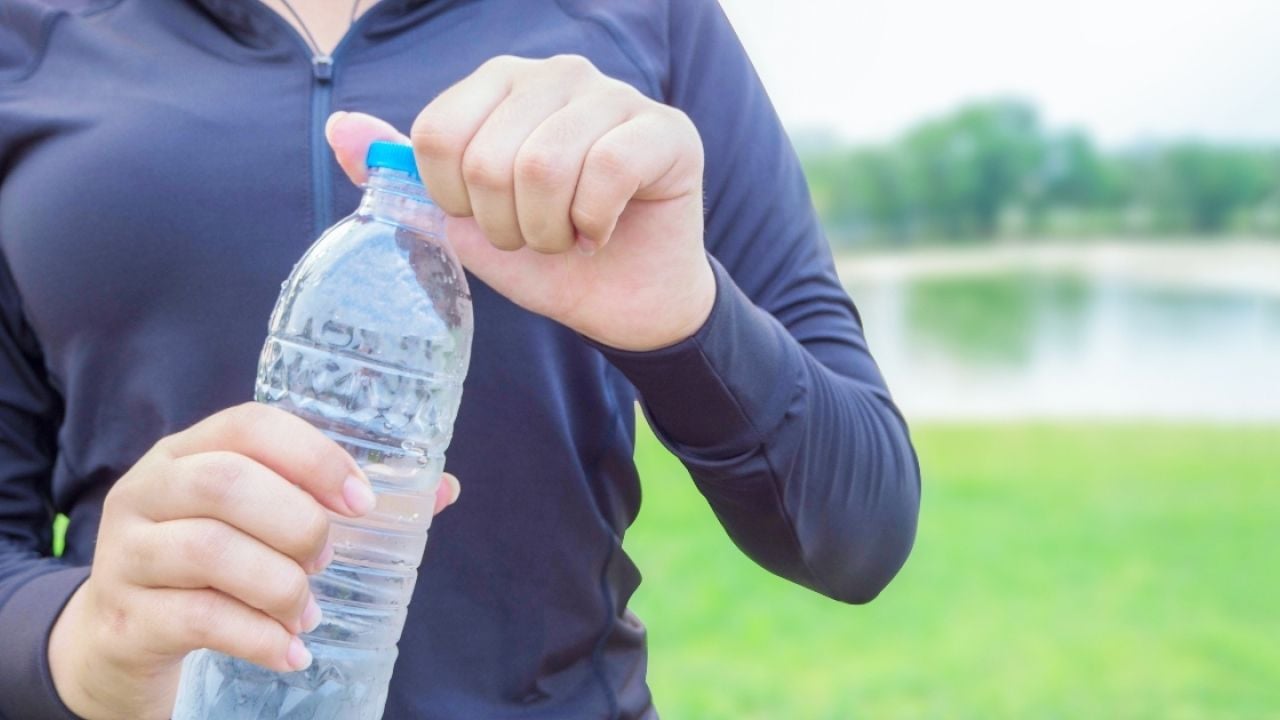
When you drink from a plastic water bottle, you could be exposing yourself to tiny, potentially harmful plastic particles known as microplastics. And the biggest source of your exposure to these microplastics could be the screw cap rather than the bottle itself.
That’s the conclusion of a peer-reviewed study published in the Journal of Water and Health, which found the repeated motion of screwing a cap on and off the bottle creates friction that generates a significant amount of microplastics, which then end up in the water you drink. Each twist can produce about 500 microplastic particles, the study found.
Widespread contamination
Scientists estimate we consume about 16,000 microplastic particles – also called solid polymer particles – in a single year from bottled water alone. The new study showed that simply holding, squeezing and drinking from a bottle didn’t increase the amount of microplastics in the water.
Microplastics in bottled water that don’t come from the cap can usually be linked to the manufacturing process. During production, plastic water bottles are subject to high pressure, temperature changes and transportation, which can cause the plastic to degrade, leading to the creation of microplastics.
Nearly all the bottles – 93 percent – in a 2018 study of more than 11 brands of water and 259 bottles contained microplastics. And French scientists found microplastics in seven out of nine bottled mineral waters tested last year.
On average, bottled water contains about 60 times more microplastics than tap water. Filtered water is the better choice, whenever possible, because it likely contains fewer contaminants that may be harmful to your health.
A global problem
Beyond water bottles, microplastics are found in many of the items we use every day.
From toys to food wrappers and much more, plastic is one of the most widely used materials in the world. Whether the item is still being used or has been discarded, the plastic can break down into tiny pieces over time, creating microplastics.
These microscopic pieces of plastic then spread into our water, soil and air. The extensive use of plastic worldwide, and its long-term persistence, has resulted in them being found where we might not have expected them to show up, like in our food and water.
Microplastic exposure is almost impossible to avoid entirely, since there is so much plastic in our daily lives, and they’re found everywhere from the Mariana Trench to Antarctica.
How they harm us
Microplastics we ingest show up in our bodies. Researchers recently discovered microplastics in human lungs, breast milk and even placental tissue.
Scientists are still studying the effects of microplastics on the human body and are increasingly finding concerning health impacts. Recently, a group of scientists in South Korea reviewed research on the human toxicity of microplastics and found potential health harms. Microplastic shapes can interfere with the digestive and respiratory systems, and their chemical additives and contaminants can harm the endocrine and reproductive systems.
As microplastics break down, the particles become small enough to pass through areas where it had been thought they could not reach, such as the blood-brain barrier, a network of tissues that protects the brain from toxins and pathogens. While there is still much to learn about the health effects of microplastics, their widespread infiltration of the world and our bodies is extremely concerning.
When plastic breaks down in the environment into microplastic particles, these particles can absorb chemical pollutants or microorganisms that could pose health risks for humans. As a result of the manufacturing process, they may also contain chemical additives, some of which can be toxic – like phthalates – and wind up polluting the environment.
Tips to reduce microplastics exposure
You can’t avoid microplastics entirely. But you can take steps to reduce your exposure.
Instead of drinking bottled water, make it a priority to drink filtered tap water whenever possible. It likely contains fewer contaminants such as microplastics. For advice about which filters to use, consult EWG's helpful guide.
When you need water on the go, consider using a reusable stainless steel bottle. It’s better for the environment and better for your health than bottled water.
If you must use disposable plastic water bottles, such as on a camping trip or in an emergency, try to keep them in a cool, dry place. Moisture and sunlight can speed up plastic degradation. And make sure to drink the water before its expiration date, when plastic can begin to leach into the water.
Cutting down on your use of plastic will help reduce the level of microplastic particles in your home, and vacuuming and dusting regularly will help even more.
###



